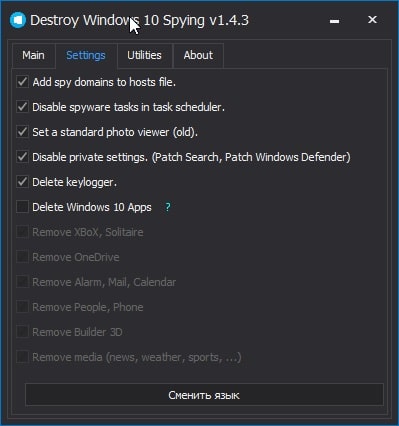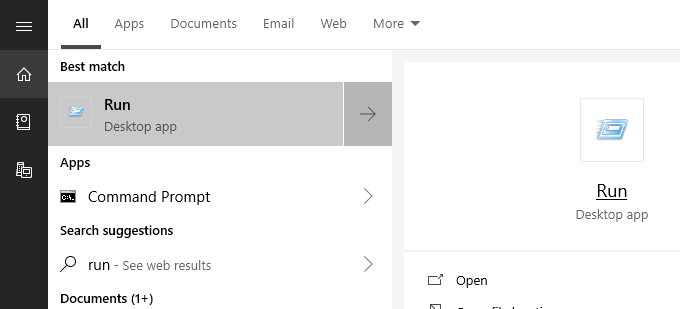- Check Disk Windows 10 Cmd
- How To Destroy Windows 10 With Command Prompt
- Cmd Commands List Windows 10
- Windows 10 Cmd Key
- Windows 10 Cmd Commands
- Repair Windows 10 Cmd
Summary :
Check Disk Windows 10 Cmd

The net1 command is available in Windows 10, Windows 8, Windows 7, Windows Vista, and Windows XP. The net command should be used instead of the net1 command. The net1 command was made available in Windows NT and Windows 2000 as a temporary fix for a Y2K issue that the net command had, which was corrected before the release of Windows XP. The function sends WMDESTROY and WMNCDESTROY messages to the window to deactivate it and remove the keyboard focus from it. The function also destroys the window's menu, flushes the thread message queue, destroys timers, removes clipboard ownership, and breaks the clipboard viewer chain (if the window is at the top of the viewer chain).
If you are suffering that Windows 10 doesn’t let you delete a file, check the 3 ways in this post for how to delete files that cannot be deleted in Windows 10 computer. Detailed step-by-step guide is provided. To recover mistakenly deleted files or lost data from Windows 10 computer or other storage devices, MiniTool offers the professional free data recovery software.
Can’t Delete a File in Windows 10?
Sometimes you may face this problem: you cannot delete a file or folder in Windows 10 no matter how many times you conduct the delete operation. How to delete files that cannot be deleted? How to force delete a file in Windows 10 computer?
Generally if a file is being opened or used by another application or program, Windows 10 computer will mark the file in a locked state, and you can’t delete, edit or move this file. When you are not using this tile, then it will be unlocked. But sometimes the file unlock process may be not successfully completed, which may cause the file delete operation can’t be accomplished, along with a warning showing that the file is opened by another program.
If you insist to delete the file or want to force to delete it, you may try these two methods in this post to unlock and delete the file.
Need to mention that this post is not talking about deleting Windows system files. Windows system files are usually protected against deletion. Deleting system files can cause issues of your Windows 10 computer OS. So please do not delete system files randomly.
If the file is corrupted or your Windows 10 computer reports that it can’t find the file, you may take some measures to conduct the disk repair process to see if it can fix this error and fix corrupted system files.
How to Force Delete a File That Cannot Be Deleted Windows 10
How to delete a file that that cannot be deleted in Windows 10? Normally you can take the basic steps below at first.
- Close all apps and programs on your Windows 10 computer, and try to delete the file again to see if it can be deleted.
- Close File Explorer. You can click Start -> Type Task Manager and choose Task Manager to open it -> Find Windows Explorer and right-click on it and choose End task to close it.
- Restarting Windows 10 can sometimes fix many issues. You can try to reboot your Windows 10 computer and delete the file again to see if it can be deleted successfully.
- You can also conduct a virus scan to see if there is a virus in your Windows 10 computer.

If all the four measures above don’t make any difference, then you can continue to try the two ways below to delete files or folders that cannot be deleted.
Method 1. Delete Files/Folders Using CMD
You can try to use Command Prompt to delete files that cannot be deleted in Windows 10.
Step 1. You can press Windows + R keys on the keyboard, type cmd, and press Ctrl + Shift + Enter to run Windows Command Prompt as administrator.
Step 2. Then input the command line and hit Enter to force delete the file in Windows 10 with CMD. The command line is like this: del c:usersalisadesktoptest.txt. Replace “c:usersalisadesktoptest.txt” with the path of the target file.
Learn how to create and delete a file or folder with cmd. Use Windows Command Prompt to create and delete files and directories.
Method 2. Use Safe Mode to Unlock and Delete Files
To delete a file that won’t be deleted, you can also try to start Windows 10 in safe mode to unlock and delete the file.
Step 1. Click Start -> Settings -> Update & Security -> Recovery -> Restart now (under Advanced Startup), to enter into Windows recovery environment.
Step 2. Click Troubleshoot -> Advanced options -> Startup Settings -> Restart.
Step 3. In Startup Settings window, you can press F4 or F5 to boot into safe mode in Windows 10.
Step 4. Delete the file or folder in Windows 10 Safe Mode.
Step 5. Restart Windows 10 and your computer will auto exit Safe Mode.
Learn how to open a file/folder in Command Prompt (cmd) on Windows 10. Step-by-step guide is included.
How to Recover Mistakenly Deleted Files from Windows 10 Computer
As for how to force delete a file, how to delete files that cannot be deleted or how to delete locked files in Windows 10, hope the above solutions in this post help.
In case sometimes you may mistakenly deleted a needed file on your Windows 10 computer, here we also attach an easy file undelete method, namely, use the professional data recovery software to easily recover deleted files from your Windows 10 computer.
MiniTool Power Data Recovery is an easy data recovery program for Windows. It allows you to easily recover deleted/lost files from Windows 10 computer, external hard drive, SSD, USB flash drive, SD card, etc. in 2 simple steps. You can use MiniTool Power Data Recovery to recover data under various data loss situations.

Download and install MiniTool Power Data Recovery on your Windows computer and follow the simple operation below to recover mistakenly deleted files.
Step 1. Launch MiniTool Power Data Recovery, and choose This PC from the left pane. Then you can choose the specific partition in the right window where your deleted files located. Click Scan button.
If you want to scan and recover specific type of files, you can click Settings to choose the file type before you click Scan button.
Step 2. After the scan process is completed, you can check the scan result to find your mistakenly deleted files, check them and click Save button to set a new destination path to store them.
Easy 3 steps to fast recover my files/data for free with best free file recovery software. 23 FAQs for how to recover my files and lost data are included.
How To Destroy Windows 10 With Command Prompt
How to Force Delete A File FAQ
Cmd Commands List Windows 10
Windows 10 Cmd Key
-->Destroys the specified window. The function sends WM_DESTROY and WM_NCDESTROY messages to the window to deactivate it and remove the keyboard focus from it. The function also destroys the window's menu, flushes the thread message queue, destroys timers, removes clipboard ownership, and breaks the clipboard viewer chain (if the window is at the top of the viewer chain).
If the specified window is a parent or owner window, DestroyWindow automatically destroys the associated child or owned windows when it destroys the parent or owner window. The function first destroys child or owned windows, and then it destroys the parent or owner window.
DestroyWindow also destroys modeless dialog boxes created by the CreateDialog function.
Syntax
Parameters
hWnd
Type: HWND
A handle to the window to be destroyed.
Return value
Type: BOOL
Windows 10 Cmd Commands
If the function succeeds, the return value is nonzero.
If the function fails, the return value is zero. To get extended error information, call GetLastError.
Remarks

Repair Windows 10 Cmd
A thread cannot use DestroyWindow to destroy a window created by a different thread.
If the window being destroyed is a child window that does not have the WS_EX_NOPARENTNOTIFY style, a WM_PARENTNOTIFY message is sent to the parent.
Examples
For an example, see Destroying a Window.
Requirements
| Minimum supported client | Windows 2000 Professional [desktop apps only] |
| Minimum supported server | Windows 2000 Server [desktop apps only] |
| Target Platform | Windows |
| Header | winuser.h (include Windows.h) |
| Library | User32.lib |
| DLL | User32.dll |
| API set | ext-ms-win-ntuser-window-l1-1-0 (introduced in Windows 8) |
See also
Conceptual
Reference
